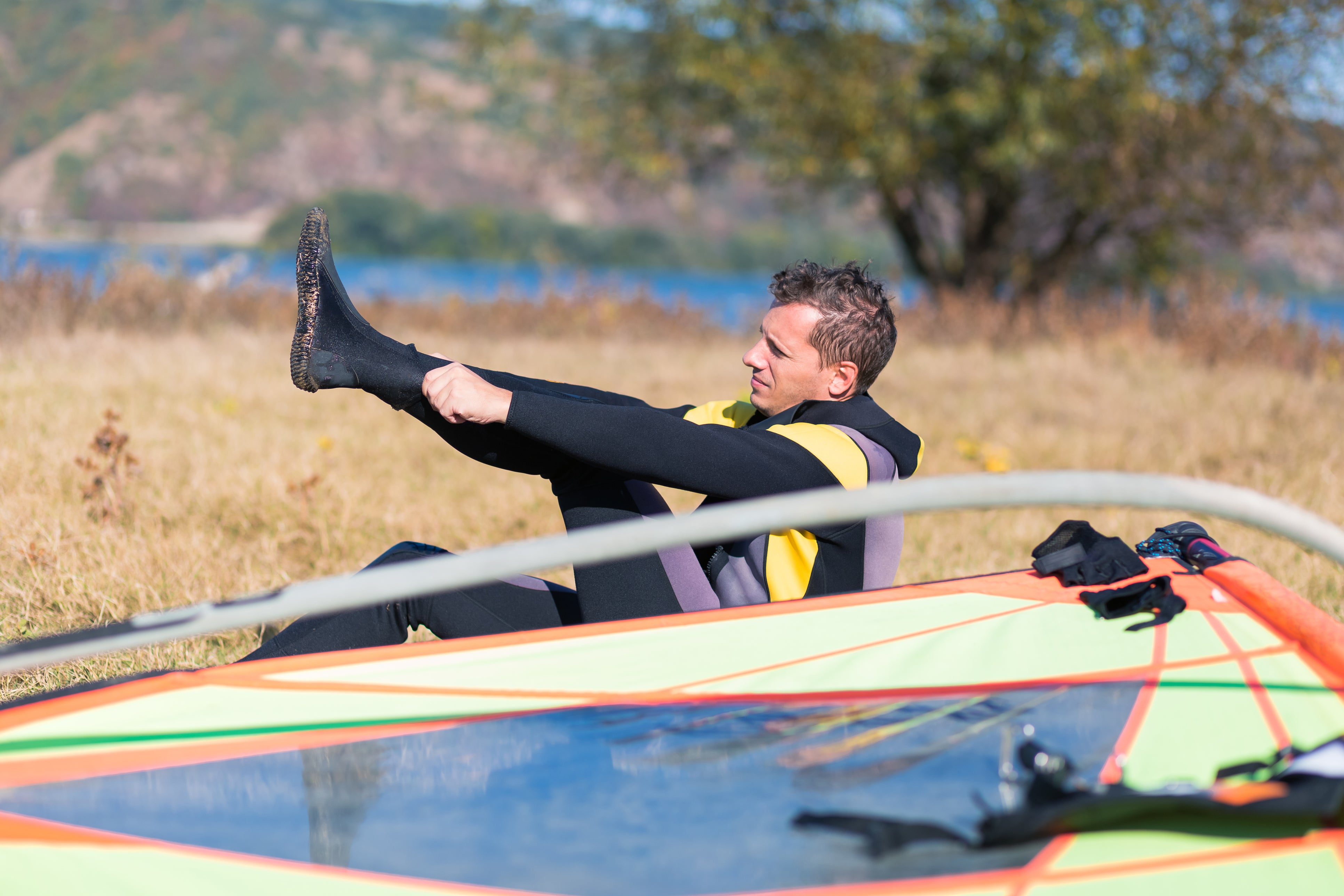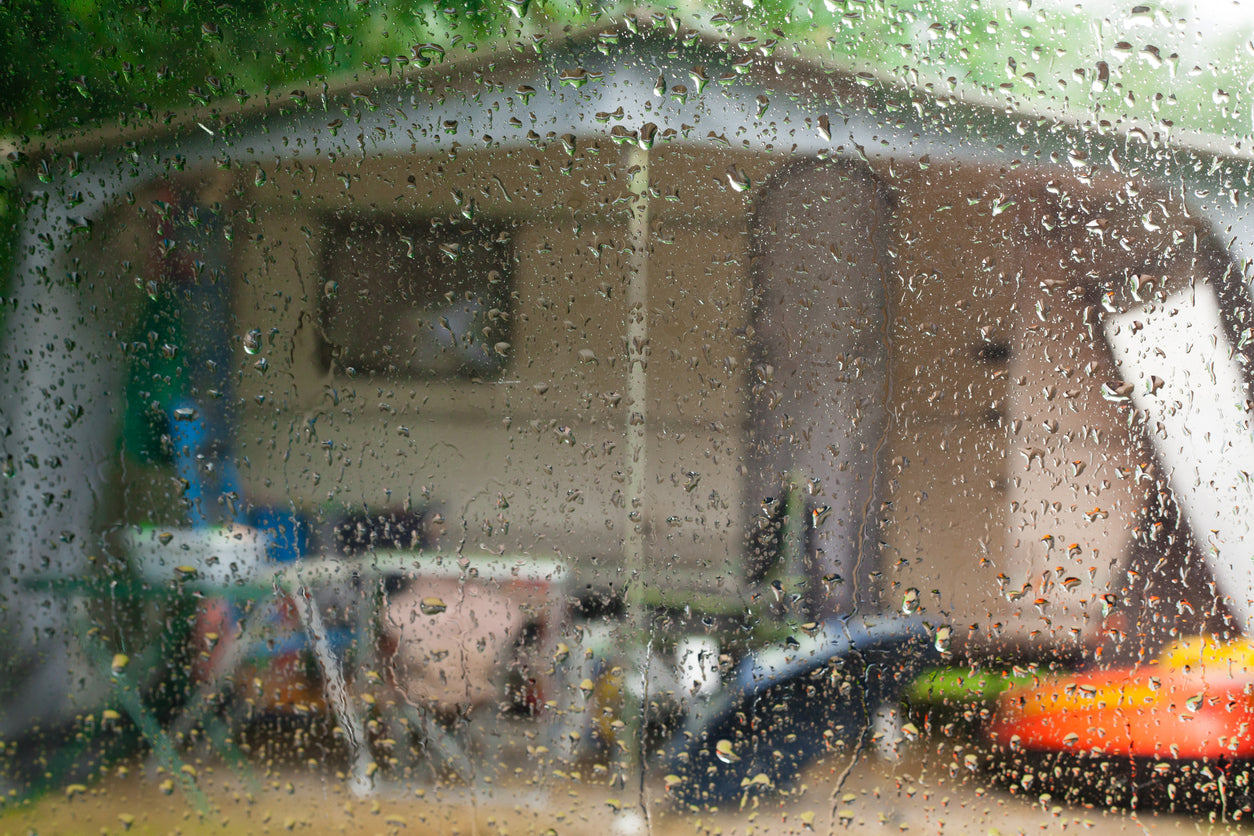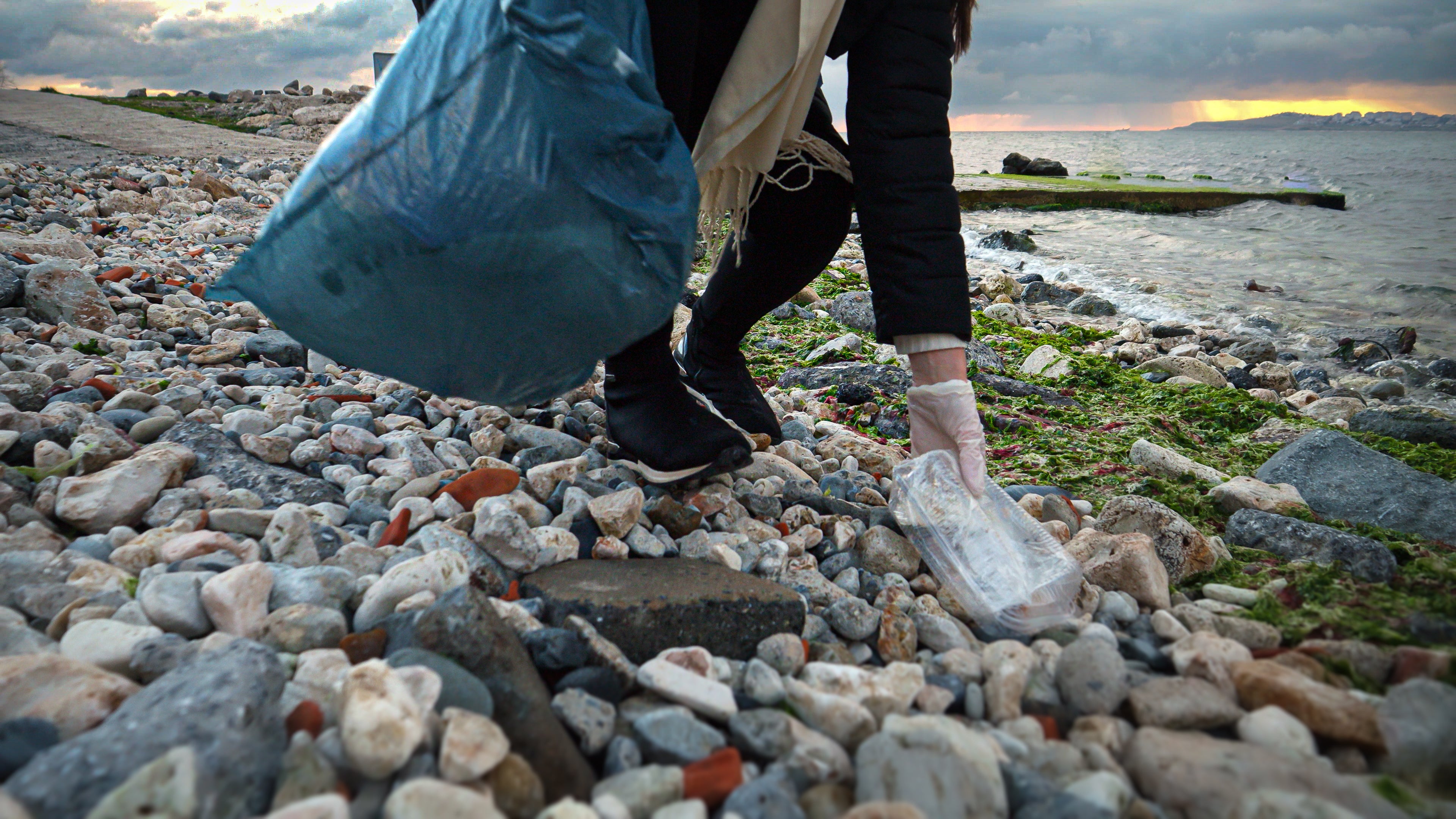
As air and water temperatures start to fall, it’s time to pull out our wetsuits. They provide the necessary warmth through heat retention that makes our surfing in the chilly water possible.
Arguably, our most important piece of surf gear, it needs to be taken care for longevity and performance. Wetsuits are expensive and have special care considerations. Not only do they need to be rinsed after use and hung on an appropriate hanger, but they also need to be protected from sharp and rough surfaces.
We all know the process: change, rinse and dry. The rinse and dry parts are straight forward. If you are near a beach shower, great. If you have a Rise Jug or portable shower, then awesome, otherwise you’ll need to rinse it when you get home. Make sure to use a hanger that allows air flow for natural drying like the DryRack.
The changing part is a little more complicated because peeling a soaked wetsuit off is not easy. Whether you are back zip or front zip, you’re going to be peeling it off and you’ll probably be using your feet to help with the process. This usually means trapping the suit between some body part and the ground in order to get your legs out. Here is the issue. Rough and sharp ground does more damage to wetsuits than anything else. You need to stand on or in something that can protect your suit from the ground. There are several solutions, like changing bag, changing mats, grass mats, and even a plastic bin. There are pros and cons to each, but any of them are better than changing on the rough asphalt and scratching up your neoprene.
What about a Changing Bag?
A good changing bag has an integrated mat to stand on when changing. This will protect your suit from the ground. It also incorporates a Dry Bag so that you can roll your suit and mat up inside and have a dry car on the way home. Once home, you’ll remove your suit and rinse it off and then rinse out the bag. The Malo’o Changing Bag is just like this. A place to stand to change and then a full 60L roll-top dry bag to keep all your wet gear inside and your vehicle dry and will run you $39.95
What about a Cinch-up Changing Mat?
These are probably the most common type of changing mats you’ll see. Many are simple round mats that provide good protection while changing but then are woefully inadequate in keeping your car dry on the way home. Many have just a few inches of side wall and almost a 100% of them will leak when being thrown into the car. You are supposed to cinch them up to keep the water inside, but just use one and you’ll see it doesn’t work. Also, they can’t be 100% waterproof and can’t trap the smell inside. $20-$30.
What about a Grass Mat?
I think at one time or another we all tried the grass mat for changing out of our wetsuits. It seems like a great idea and it’s fun to feel the grass between your toes… but while it does a great job of protecting your suit from the ground, what happens when you need to go to work or drive home? You’ll need to roll the wet mat up and place it somewhere, and then what about your suit??
You see it’s not a complete solution and you’ll spend about $30-40 for one. You need something else to go along with it. Like a dry bag or bin.
What about a Bucket or Bin?
If you have a grass mat or a changing mat, you probably also use a bucket or bin in the back of your vehicle. As I noted before, you’ll need somewhere to transport your wetsuit and wet mat.
But could you use a bucket or a plastic bin by itself? I’ve seen many surfers try this one. They get a 27-gallon plastic bin from Home Depot or Amazon, and they think they have solved the changing equation. They stand in the bin, like a circus performer, often pour water over themselves and change out of their wetsuit.
If you have small feet this could work. I have size 13 and they are not going into the bin very easily. Anyway, while this can take the place of the mat and protect your suit, you’ll then have the bin and lid taking up considerable space in your vehicle. BTW, the bins are not air-tight, so the smell can be brutal if left in a closed car for a few hours and will run you about $25-30.
I mostly see beginners using the plastic bin approach. They saw someone else using it and didn’t realize it makes them look like a kook.
Which one is best?
• The Malo’o Changing Bag is $39.95, a Grass Mat is $30-40, and a 27-gallon plastic bin is $25-30, and a Changing Mat Bag is $20-30.
• A Grass Mat works well if you are changing and don’t need to travel anywhere.
• A Plastic Bin doesn’t work well anywhere but there are those that have one laying around and you are too cheap to get a changing bag or mat.
• A Changing Mat Bag is probably the most widely used today. We used one too until we decided to improve upon it but adding a full 60 Liter Dry Bag to the Mat.
• The Malo’o Changing Bag is the best solution out there right now. It’s not just because we make it, it’s because it is:
o Affordable
o Integrated mat for changing
o 60L 100% Waterproof Dry Bag for transporting
o Integrated handles and straps to seal the water and smell inside
o Removable mat so the roll-top bag can be used for rafting, boating or other activities.
Anyone who has ever surfed knows that a wetsuit is one of the most expensive and important items for surfing. Taking care of it start when you’re changing out of it.
Mahalo,



